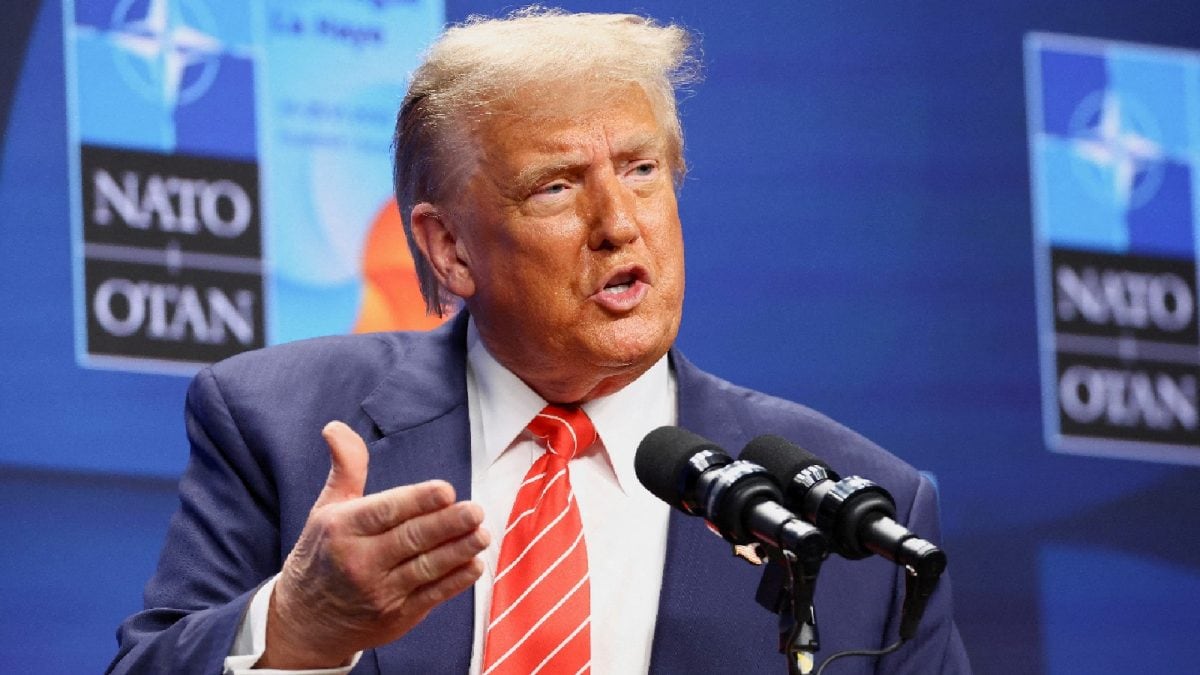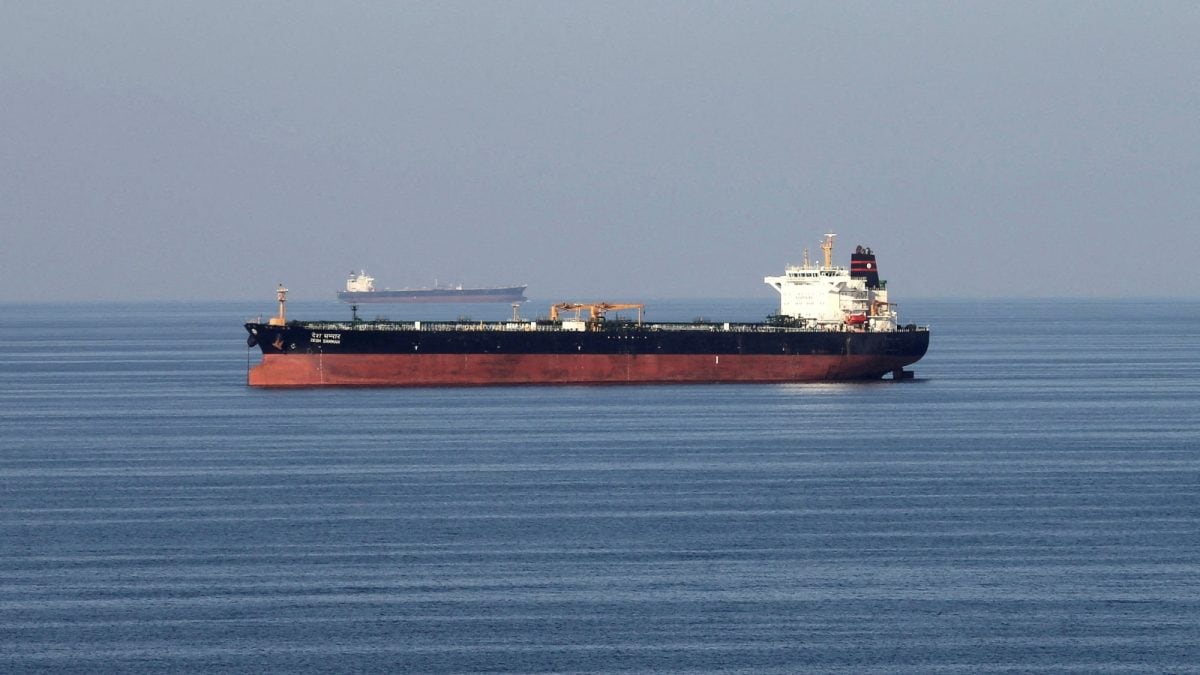ARTICLE AD BOX
Last Updated:June 26, 2025, 15:49 IST
Built over 100 metres deep, Pickaxe Mountain is believed to be far more fortified than Iran’s Fordow facility, and possibly beyond the reach of even America’s bunker-buster bombs

A satellite view shows an overview of Fordow underground complex, after the US struck the underground nuclear facility, near Qom, Iran. (IMAGE: REUTERS)
In the heart of Iran’s central Isfahan province lies a mountain with an ominous name and even more ominous purpose — Pickaxe Mountain. Known formally as Kūh-e Kolang Gaz Lā, this rugged terrain just south of Fordow and minutes from Natanz has quietly become the focus of global nuclear anxiety.
Despite US President Donald Trump’s recent claim that American stealth bombers “obliterated" Iran’s nuclear programme with a weekend airstrike, experts and intelligence assessments indicate that Tehran may have moved its most vital materials out of reach, into the depths of this mountain fortress.
What And Where Is Pickaxe Mountain?
Pickaxe Mountain is located about 145 km south of Fordow and just minutes from the Natanz nuclear facility, two of the three key sites bombed by US B-2 stealth jets using 30,000-pound GBU-57 bunker-busting bombs. But unlike Fordow, which has two known tunnel entrances, Pickaxe has at least four—two on the eastern and two on the western slopes—each around six metres wide and eight metres tall.
What makes Pickaxe more formidable than its predecessors is its extraordinary depth. According to The Telegraph, analysts estimate the underground facility is being constructed at more than 100 metres beneath the surface, far deeper than Fordow’s 60–90-metre depth. This has raised concerns that even America’s most powerful non-nuclear bombs may not be able to destroy it.
“The Kolang Gaz Lā or ‘Pickaxe’ mountain underground complex is intended to give the clerical regime a nuclear weapons site that even the US Air Force would have difficulty destroying with its largest conventional bombs," Reuel Marc Gerecht, a resident scholar at the Foundation for Defence of Democracies, told The Telegraph.
What’s Happening Under The Mountain?
Open-source satellite images first drew attention to Pickaxe Mountain in 2023. Associated Press, after reviewing photos from Planet Labs PBC, confirmed that Iran was digging deep into the mountain. Security checkpoints and excavated tunnels were also observed.
Experts fear that Iran is building not just a centrifuge manufacturing centre, but an enrichment hub for uranium itself.
Steven De La Fuente, a research associate at the James Martin Centre for Nonproliferation Studies, told AP in 2023: “So the depth of the facility is a concern because it would be much harder for us. It would be much harder to destroy using conventional weapons, such as like a typical bunker buster bomb."
According to the Institute for Science and International Security, Iran could “secretly deploy several thousand advanced centrifuges in the new tunnel complex", enough to continue uranium enrichment even if all other known sites are destroyed.
Did Iran Move Uranium Before The Bombing?
Despite Trump’s repeated assertions that his surprise attack wiped out Tehran’s nuclear infrastructure, evidence suggests otherwise. A leaked preliminary classified US report, quoted by The Telegraph, indicates that the strikes only set Iran’s nuclear progress back by a few months.
Officials told The New York Times that while parts of the facilities were sealed off, most underground structures remained intact.
Adding to the concern, the NY Post reported that satellite images showed 16 cargo trucks queuing outside Fordow hours before the strikes. Sima Shine, a long-time Israeli intelligence official, told The Telegraph that “hundreds if not thousands" of advanced centrifuges and a large portion of enriched uranium were likely moved to secret locations before the bombs fell.
The most likely of those locations? Pickaxe Mountain.
IAEA Stonewalled By Iran
The international watchdog responsible for monitoring nuclear activity, the International Atomic Energy Agency (IAEA), has been kept out of the loop.
In April, IAEA Director General Rafael Grossi revealed he had asked Tehran what was being constructed under Pickaxe Mountain. The response was blunt: “It’s none of your business."
Grossi later told NY Post: “Since it is obvious it is in a place where numerous and important activities related to the programme are taking place, we’re asking them, what is this for? They are telling us, it’s none of your business."
He added: “It cannot be excluded that the tunnels would store undeclared material," noting that he has “been raising this issue repeatedly, and will continue to do so."
That concern has grown more urgent. On Wednesday, the Iranian parliament passed a bill to suspend all cooperation with the IAEA, calling it a “political instrument".
How Much Uranium Is Unaccounted For?
According to the latest IAEA data cited by The Telegraph, as of May 17, Iran had 408.6 kg (about 900 pounds) of uranium enriched to 60 per cent purity. This was an increase of 133.8 kg from the agency’s last report in February.
After the airstrikes began on June 13, roughly the same amount — 900 pounds — has been reportedly unaccounted for. The suspicion is that it was moved to Pickaxe or another undisclosed location.
Donald Trump disputes this. “They didn’t have a chance to get anything out because we acted fast," he said during a press briefing. “It would have taken two weeks, maybe. But it’s very hard to remove that kind of material, very hard and very dangerous for them to remove it."
Yet intelligence assessments reviewed by The Telegraph suggest that Iran not only managed the relocation, but retained enough capability to rebuild its programme in as little as six months.
Macron’s Warning And Israel’s Unease
French President Emmanuel Macron has echoed these concerns. “The risk has indeed increased with what has happened recently," he said. “We must absolutely prevent Iran going down this path."
Israel is also watching closely. A shaky US-brokered ceasefire between Iran and Israel did little to halt hostilities. Israeli jets struck Iranian targets just hours into the truce, prompting Trump to call Israeli Prime Minister Benjamin Netanyahu and demand restraint. “They don’t know what the f— they’re doing," Trump later said, referring to both countries.
What Happens Now?
The future of Iran’s nuclear programme appears increasingly decentralised and fortified. Intelligence experts say Iran has adopted a dispersal strategy, spreading critical capabilities across multiple sites to ensure redundancy in case of attack.
Security analysts warn that in the event of an existential threat to regime survival, Iran may abandon its insistence on peaceful nuclear use and pursue weapons outright. Some hardliners in Tehran have already called for immediate nuclear bomb development.
Even so, Iran’s Supreme Leader Ayatollah Ali Khamenei maintains that a religious fatwa prohibits nuclear weapons. Iranian MP Manan Raisi confirmed the fatwa “remained in place", but noted such rulings in Shia Islam “could change based on time and circumstances".
Ahmad Naderi, another Iranian MP, went further: “I believe we need to conduct a nuclear bomb test, and there is no other way for us."
Pickaxe Mountain And The Next Phase
What began as a remote construction site has now become the centrepiece of Tehran’s nuclear resilience, and the biggest blind spot for Western intelligence.
With four reinforced tunnel entrances, a depth surpassing 100 metres, and signs of secure enrichment activity, Pickaxe Mountain could represent the next chapter of Iran’s nuclear saga, one potentially shielded from the world’s most powerful bombs, and even more so from its scrutiny.
Unless international inspectors are granted access and surveillance is restored, the fortress under Pickaxe may remain just that — impenetrable, untouchable, and dangerously unknown.

Karishma Jain, Chief Sub Editor at News18.com, writes and edits opinion pieces on a variety of subjects, including Indian politics and policy, culture and the arts, technology and social change. Follow her @kar...Read More
Karishma Jain, Chief Sub Editor at News18.com, writes and edits opinion pieces on a variety of subjects, including Indian politics and policy, culture and the arts, technology and social change. Follow her @kar...
Read More
- Location :
- First Published:
News explainers With 4 Hidden Tunnels And 100 Metre Depth, Is Pickaxe Mountain Iran’s Nuclear Plan B?



.png)
.png)
.png)
















 4 hours ago
3
4 hours ago
3









 English (US) ·
English (US) ·